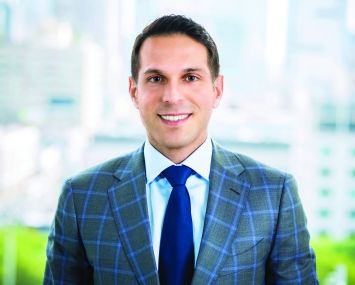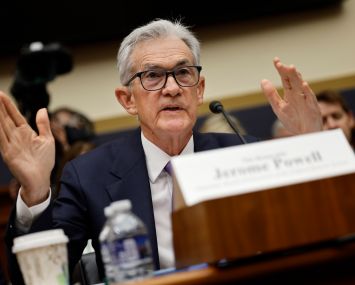Presented By: Meridian Capital Group
Seth Grossman Talks Trends and Meridian’s Growth in Southern California
By Meridian Capital Group November 11, 2019 8:42 am
reprints
Southern California is known for its warm weather, but where it’s really hot is real estate. That’s the word from Seth Grossman, Senior Managing Director with Meridian Capital Group. Seth, who oversees the firm’s Los Angeles and San Diego offices, reports that the SoCal team is wrapping up its best year yet. He attributes this result to hard work, a strong team, great clients, and an unabated appetite for deals from both lenders and investors. We asked him for a few more details. Here’s what he had to say:
Q: You and your team have already concluded more than $1.8 billion in transactions this year, which means that 2019 will be a record year for you. Looking back to 12 months ago, were you expecting such a high level of activity?
A: No. I was expecting things to slow down given the widespread consensus about excessively high asset pricing. While that makes it harder to get deals done than it was a few years ago, there still is a lot of capital out there. Developers are figuring out creative ways to access that capital, and they’re breaking a bit with tradition. For example, we have clients who used to buy only stabilized properties. They’re now acquiring assets that require a light value-add. Clients who used to focus on light value-add are now venturing into heavy value-add. And many heavy value-add investors are moving into construction. These groups are willing to venture into new territory to produce yield as long as they feel they have mitigated downside. They’re open to this shift because they have confidence in the market and their abilities.
Q: Are you observing this trend across all asset types?
A: Yes, although I see it the most in multifamily and office. Those are the sectors where there’s more room for experimentation, because if things don’t work out you can revert to a more traditional business plan without as much collateral damage as you may experience with other property types. In the multifamily space, you can balance smaller units with better shared amenities to achieve higher rents per square foot. And with offices, you can adopt coworking concepts to achieve the same type of ratio. If those plans don’t work, its not unreasonable to convert back to a traditional product. With retail or hotel for example, once you commit to a non-traditional product offering, it’s very cumbersome to backtrack.
Q: In terms of geographies, are your clients venturing farther afield than they used to?
A: Definitely. On the one hand, you have core markets that are tighter than ever, and many clients are successfully deploying capital in those areas and carefully choosing their entry points. Los Angeles projects have no shortage of bidders but there is opportunity for seasoned operators. On the other hand, we’re seeing investors that have historically focused on Los Angeles moving into Phoenix, for instance. Groups that were in Phoenix are moving to, say, cities in Oklahoma, Georgia, the Carolinas and Texas. Lenders, too, are moving toward new geographies.
Q: What types of lenders are you working with these days?
A: We work with a wide variety of lenders — much wider than we used to. When we started up this office in 2011, we worked primarily with a small handful of CMBS lenders, debt funds, and banks. In my first two years here, I think we closed transactions with 10 or 11 lenders. In just 2018 and 2019, we will have closed with 45 lenders. We maintain close-knit relationships with our core lenders, but we also must find the right economics for our clients, so we are constantly exploring and cultivating new capital relationships.
Q: What sorts of trends have you observed on the lending front?
A: One striking development is lenders offering forward rate locks with flexibility. We just closed a $26 million multifamily loan with a 3.38 percent fixed rate for 10 years, which we rate-locked over six months ago, initially at 3.53 percent. That lender provided a one-time right to break the lock and re-lock if rates came down, which our client took advantage of. What made it more unique is that $21.5 million was funded upfront and there is an additional $4.5 million that can be earned out anytime between now and December 31, 2020. The 3.38 percent rate holds for the future funded portion as well, even though no interest is charged on that money until its drawn. It is in essence a 20-month rate lock. We also obtained a six-month forward lock on $365 million in Freddie Mac financing for a seven-property multifamily portfolio that allowed multiple loan upsizes from the time the loans locked until they closed, based on our client achieving pre-determined net income thresholds. And we are closing a few more deals in 2020 with 12-month rate locks already secured at 3.25 percent for 10 years fixed.
Another trend includes more closings with 10 years interest-only. Kovi Elkus on my team has secured hundreds of millions of dollars in 10-year interest-only financing for clients recently, often with very tight debt yields and DSCR ratios.
There are also more banks offering non-recourse, ground-up construction loans. The banks are seeking low leverage and very strong sponsorship, but in the past non-recourse options were rare. We just closed a ground-up spec-office building with no pre-leasing. It was non-recourse and in an opportunity zone in the Downtown Los Angeles Arts District.
Q: How is your team coping with all of this activity?
A: Our team is great, and everyone is working really hard. Our East Coast colleagues joke that we’re living the easy California life out here. We do try to leave the office at reasonable hours, but we’re typically on calls and exchanging emails from home deep into the night just like our counterparts in New York. It’s because we care a lot about our clients. They’ve become close friends and we have to do a good job for them. That’s why we’re often working at midnight. That said, we are planning to bring on a few more team members in 2020.
Q: Do you have any predictions for 2020?
A: I probably shouldn’t make any predictions. Since 2011 I’ve been certain we’d see rates increase every year, and I thought this year would be slow relative to last and it ended up being our best year yet. I’ll simply emphasize that there’s still a lot of capital out there. In past years, raising capital was most clients’ biggest challenge. Now the biggest challenge is finding deals. In 2020, creativity in deal making and value-add will determine volume. My team and I are looking forward to helping that happen.


